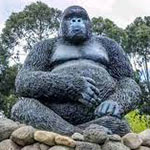Best Time for Rwanda Gorilla Trekking
Gorilla trekking in Rwanda is a once-in-a-lifetime experience that draws adventurers and wildlife enthusiasts from all over the world. Nestled within the misty peaks of Volcanoes National Park, Rwanda’s mountain gorillas are one of the most awe-inspiring sights in Africa. However, to make the most of this adventure, it is crucial to understand the best time to visit. Various factors, including weather conditions, gorilla movements, permit availability, and tourist traffic, influence the ideal timing for a trek. Below is an in-depth exploration of the best time for gorilla trekking in Rwanda.
Dry Seasons: The Ideal Trekking Period (June to September & December to February)
The best time for gorilla trekking in Rwanda is during the dry seasons, which occur from June to September and December to February. These months offer the most favorable conditions for trekking, as the trails are drier, less slippery, and easier to navigate.
Why the Dry Season is the Best Time to Visit
- Easier Hiking Conditions
Gorilla trekking involves hiking through dense forests, steep slopes, and thick vegetation in search of a gorilla family. During the rainy season, trails become muddy, slippery, and more challenging to navigate. In contrast, the dry season offers more stable ground, making it easier for trekkers to move through the forest without struggling too much with the terrain. - Better Visibility for Photography and Viewing
The drier months generally come with clearer skies and less mist, providing excellent visibility for photographers. The reduced rainfall means less fog and heavy clouds, which improves lighting conditions for capturing stunning shots of the gorillas in their natural habitat. - More Predictable Gorilla Movements
While mountain gorillas can be tracked year-round, their movement is somewhat influenced by weather conditions. During the dry season, they tend to stay at lower altitudes where food sources are more abundant, making it easier and quicker to find them compared to the wet season when they move higher up the mountains in search of food. - Higher Chances of Securing Permits
Since the dry season is the peak tourist season, visitors are advised to book their permits well in advance. Rwanda issues only 96 gorilla trekking permits per day, and competition is high during this time. Booking early ensures that you secure a spot and plan your itinerary accordingly.
Wet Seasons: The Off-Peak But Adventurous Option (March to May & October to November)
The rainy seasons, occurring from March to May and October to November, present a different set of challenges and opportunities for gorilla trekking. While these months are characterized by heavier rainfall, they also offer unique advantages for certain types of travelers.
Why Some Tourists Choose the Wet Season
- Fewer Crowds and More Permit Availability
Since most tourists prefer trekking during the dry season, the number of visitors significantly drops during the rainy months. This makes it easier to secure permits, sometimes even at short notice. Travelers looking for a more private, less crowded experience may find this period more appealing. - Lower Costs on Accommodation and Tours
Hotels, lodges, and tour operators often lower their prices during the low season to attract visitors. This makes gorilla trekking more affordable, especially for budget-conscious travelers. Discounts on accommodation, flights, and other services make it a cost-effective time to visit. - Lush Green Scenery and Unique Photography Opportunities
The wet season transforms Volcanoes National Park into a lush, green paradise. The dense foliage, vibrant flowers, and misty forest backgrounds create an ethereal atmosphere that enhances the trekking experience. Photographers who enjoy capturing dramatic landscapes may find this time ideal for unique shots. - Shorter Trekking Times Due to Gorilla Movements
Unlike in the dry season, when gorillas roam further in search of food, they tend to remain in lower altitudes during the rainy season where food is more plentiful. This can result in shorter trekking times since the gorilla families are easier to locate.
Challenges of the Wet Season
- Difficult Trekking Conditions: The trails become muddy and slippery, requiring proper hiking boots, rain gear, and extra physical endurance.
- Unpredictable Weather: Rainfall can be heavy and sudden, sometimes making the trek more strenuous and less comfortable.
- Limited Visibility: Mist and rain can sometimes obscure visibility, making photography and viewing slightly more challenging.
Other Considerations for Choosing the Best Time
Wildlife Viewing Beyond Gorillas
For travelers who wish to combine gorilla trekking with other wildlife experiences, the dry season is also the best time for game viewing in Akagera National Park and chimpanzee tracking in Nyungwe Forest. The dry months offer better wildlife sightings since animals congregate around water sources and are easier to spot.
Personal Preferences and Fitness Levels
Travelers who prefer easier hikes and more comfortable conditions should opt for the dry season. However, adventurous and budget-conscious trekkers who do not mind the rain and tougher trails may find the wet season just as rewarding.
Final Verdict: When Should You Go?
- For the best trekking experience with easier hikes, better visibility, and higher chances of securing permits, visit during the dry seasons (June to September & December to February).
- For a quieter, more budget-friendly, and unique experience with lush green landscapes, visit during the wet seasons (March to May & October to November).
Ultimately, gorilla trekking in Rwanda is an unforgettable experience regardless of the season. Each time of the year offers its own advantages and challenges, making it essential to choose a period that aligns with your preferences, budget, and adventure level.
